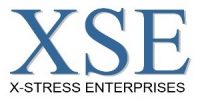Many companies use business best practices benchmarks to analyze and align operations, yet most companies do not benchmark the leaders who are charged with achieving the results.
Companies use benchmarks to analyze and align operations within their company or with other companies in their business sector. The best practices benchmarks are usually focused on operational expenses and performance. Leaders in these companies have a direct impact on the best practices measured, yet most companies do not benchmark the leaders who are charged with achieving the results.
What impacts a leader’s best practices performance?
Business Acumen
- Aligns with strategy
- Enables better decision making
Competencies
- Leverages/exploits existing/emerging technologies
- Ensures acceptable levels of control and risk management
- Optimizes the skills and capabilities of the organization
Motivators
- Reduces costs
- Improves productivity
Behavioral Science
- Promotes timely execution
- Communicates effectively with all levels of the organization
- Promotes collaboration across the extended organization
What if your company had a tool to accurately benchmark your leaders’ best practices capabilities and designed targeted development for those leaders?
X-Stress Enterprises has that tool. Please contact us at rick@x-stress.com for more information on this cutting edge process.
